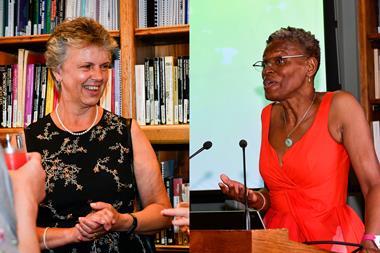Scientists in Brazil have studied the structure and hydrogen bonding interactions of water at a hydrophobic surface at the molecular level.
Our surprisingly primitive understanding of the behaviour of water at a surface boundary could soon become much more advanced. Omar Teschke and Elisabeth de Souza from the University of Campinas, Brazil, have provided a new insight into the behaviour of surface water molecules.
They used atomic force microscopy to selectively probe the water molecules at the boundary between water and a hydrophobic surface such as air. This provided a picture at the molecular level of the structure and hydrogen bonding interactions of water at such interfaces. It also allowed the first measurement of a dielectric permittivity profile (the ability to store electrical potential energy) at a hydrophobic surface.
Their results showed that at a few nanometres from the surface, water is as rigid as ice, and further away the molecular rigidity decreases. However, this poses the question that if the water layers are so tightly bound that they make the film almost solid, how can they also be fluid enough to provide lubrication to the surface?
Teschke and de Souza believe that this is because instead of increasing uniformly with distance from the surface, the dielectric permittivity shows an oscillating behaviour. The researchers propose that this behaviour is caused by a hydrogen-bonded network of water clusters. Each cluster has a central region surrounded by a layer of water molecules in a more rigid arrangement. The spatial scale of clusters is enormous compared to the size of a water molecule, and the mobility of the clusters allows the water to behave as a fluid at the surface.
’The interactions of water with hydrophobic surfaces are intimately linked to intra- and intermolecular recognition processes, such as membrane formation, micellar self-assembly, protein folding and.the binding of enzymes to substrates,’ said Teschke. It is clear that these experimental measurements are crucial to further the understanding of these processes.
Sarah Dixon
References
O Teschke and E F de Souza,






No comments yet